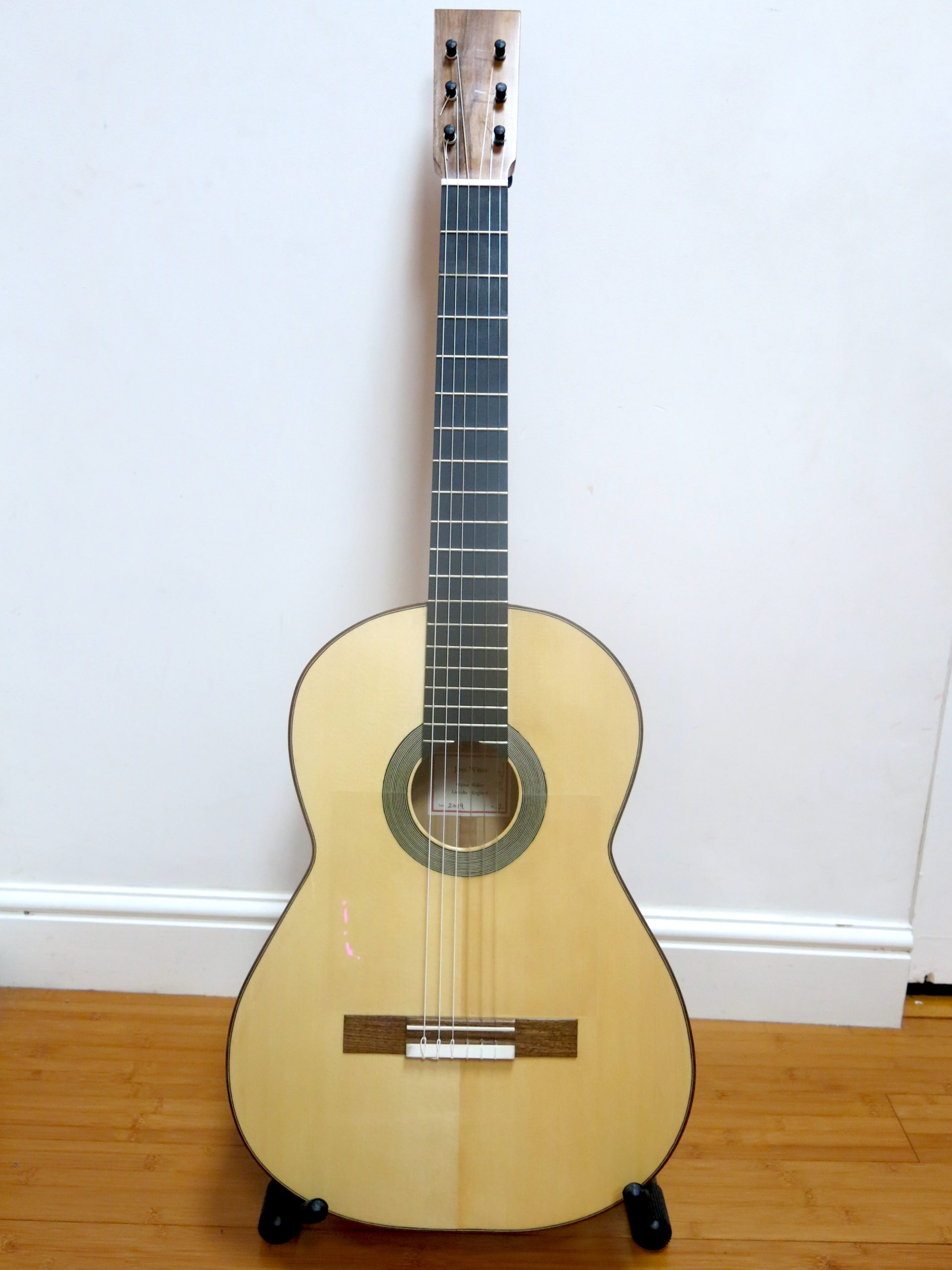

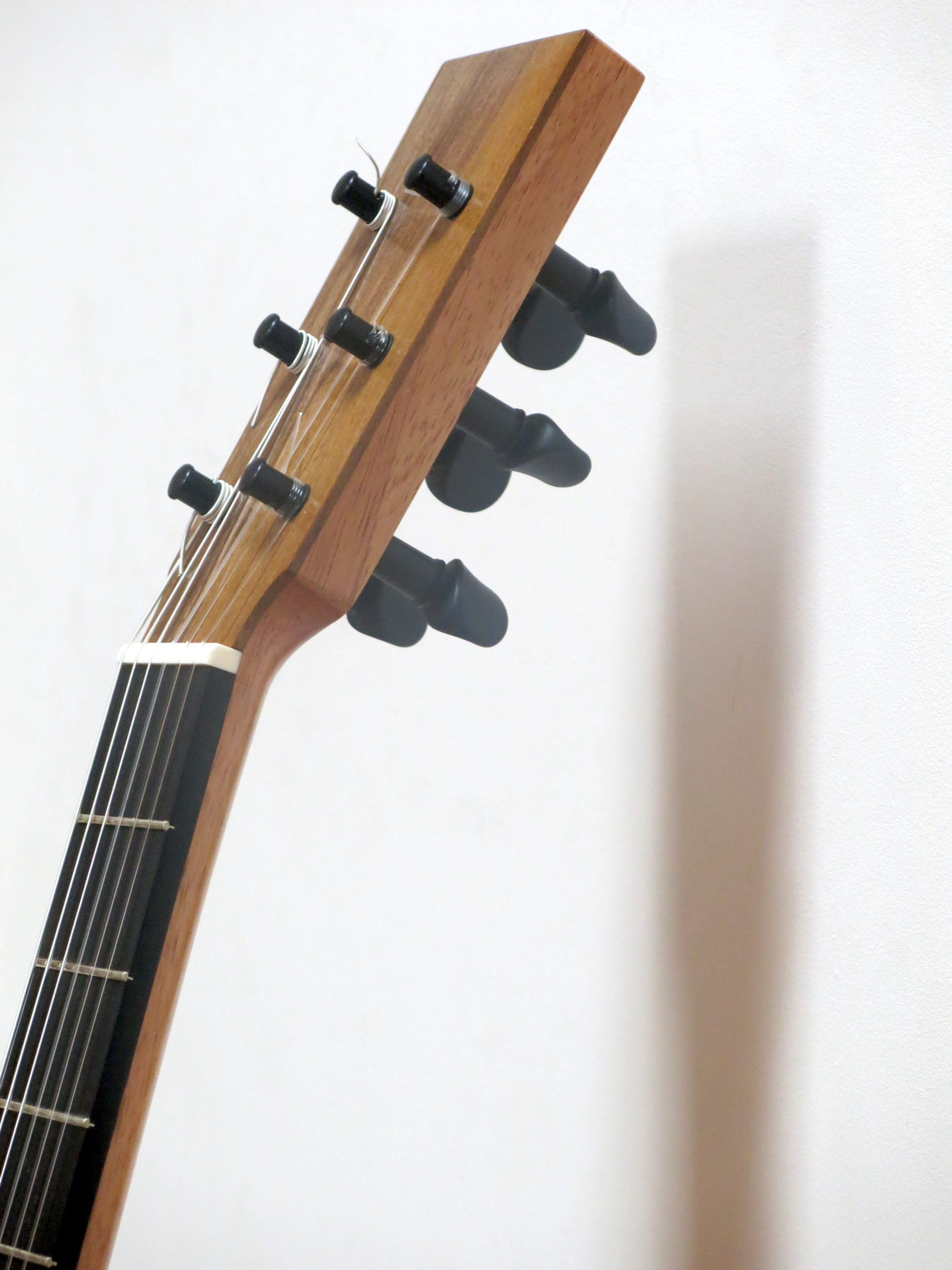

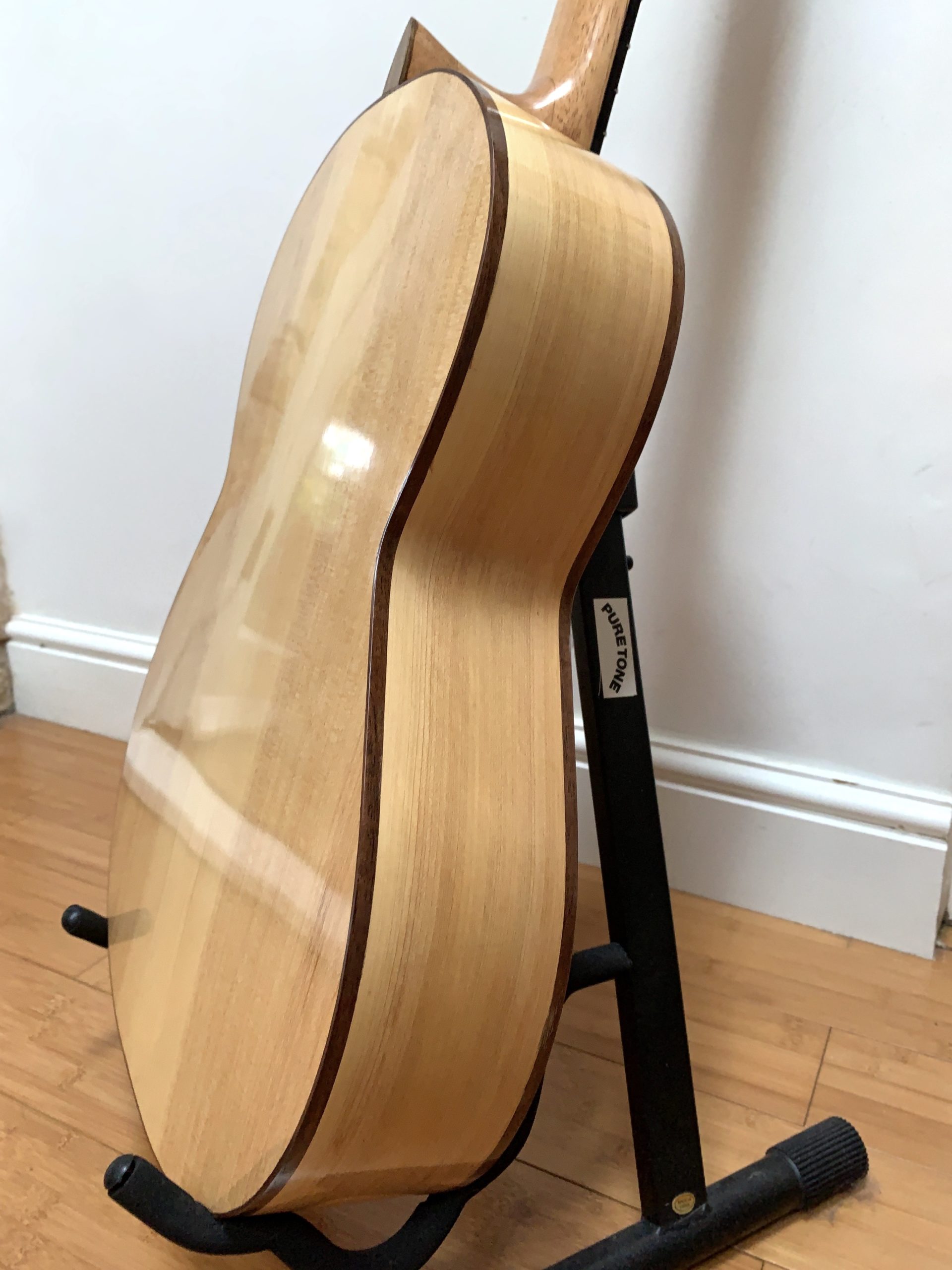
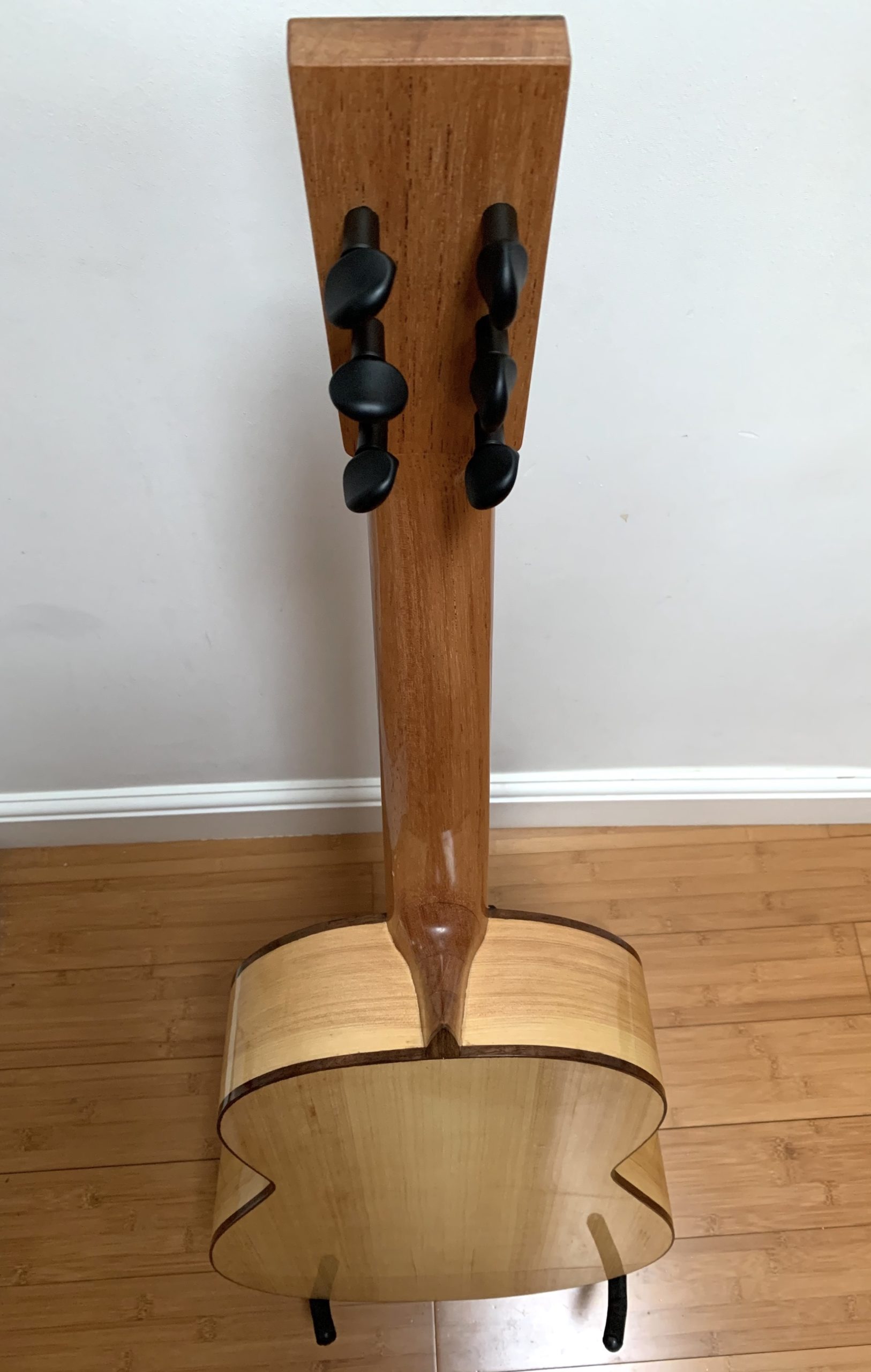
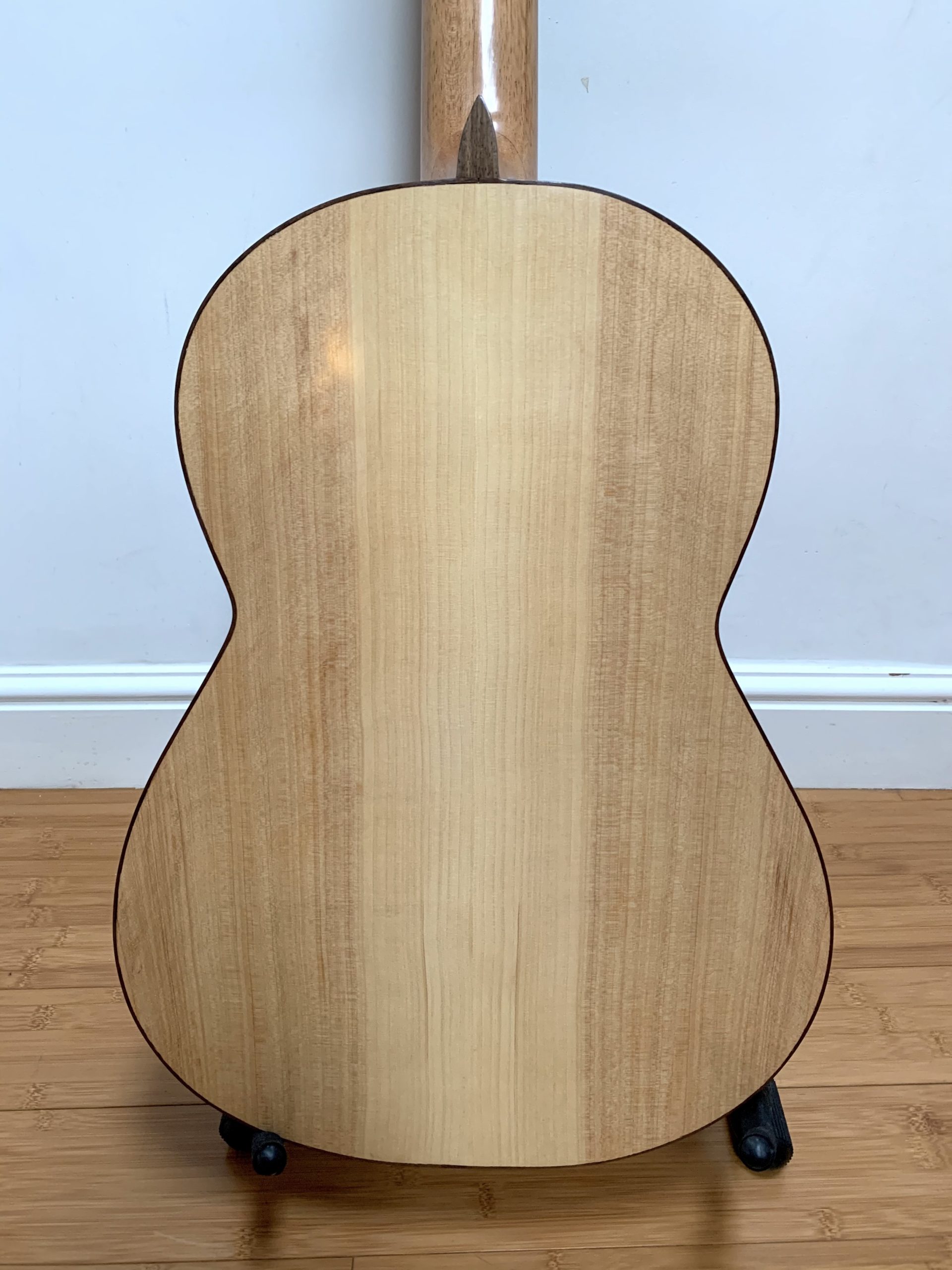
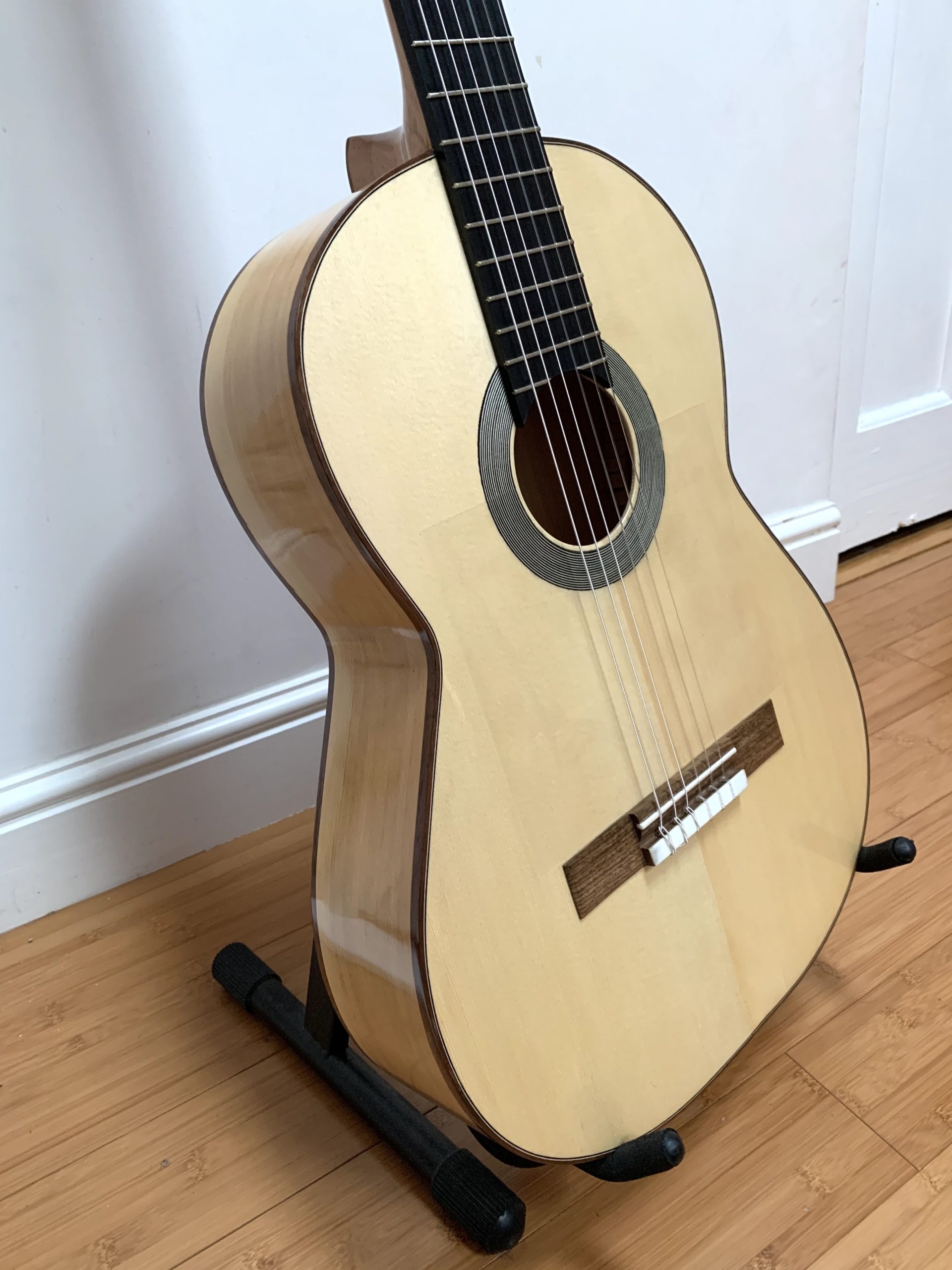
I finished making my fourth guitar just a couple of days before Christmas. It is, in many respects, very much like the previous two. It’s based on the same Barbero plan, has Cypress back and sides, and this time a European spruce top and walnut for the bridge, head veneer and bindings. It’s 650mm scale rather than 660mm. I built it for a friend, Andy, who heard guitar #3 and wanted one like it. The only instructions I received from Andy were to use mechanical pegs (I opted for Wittner pegs) and that he liked the square head shape of my previous two guitars.
Overall, I am pleased with the outcome as it is very consistent with guitar #3. The air resonance of #4 is 90.3Hz (F#-42 cents) compared to 90.2Hz (F#-44 cents) of #3, and the weight is 1247g compared to 1189g of #3. The mechanical tuners weigh an additional 34g over the ebony turners used on #3, so taking that into account, the overall total weight difference is just 24g.
I used hide glue for the first time which was difficult at first but became easier as I got used to it. It gels very quickly and needs to stay quite runny (i.e. warm) to achieve coverage over large areas. I didn’t feel confident enough using it to joint the top and back, nor to glue the bridge with it after having french polished the guitar, but I’ll definitely continue to use it for certain tasks such as making the rosette and gluing the linings, purfling and binding, when the quick grab time is useful.
My workmanship is slowly improving. Throughout the build process, I’m often reminded of David Pye’s concept of the workmanship of risk vs. workmanship of certainty, whereby the use of jigs and machine tools can increase the the certainty of the outcome, compared to workmanship that relies more on hand tools, individual judgement and the maker’s skill and is therefore more risky. I work in a very free manner but a few more jigs and templates would be helpful and improve the accuracy of my work. When I interviewed luthiers in their workshops during the course of my research, it was very common to see a variety of jigs and a small number of machine tools. Machine tools are mainly used to reduce the labour required, whereas jigs improve the accuracy and consistency of the work. One of the reasons apprenticeships in lutherie are so rare is that machines have replaced the labour that apprentices used to be employed for. The labour time that I put into an instrument is of little consequence because I’m not trying to make money and I enjoy the physical and leisurely pace of work, but I do want to make some more jigs before I make the next guitar (which will also be a flamenco guitar for another Andy).
There was a point while making this guitar that I felt like I was achieving more autonomy in my work. I wasn’t constantly referring to the DIY books or previous notes quite so much and I am beginning to intuit what comes next in the process; not entirely – not like the luthiers I spoke to who have all the measurements in their head – but I’m experiencing a growing sense of taking the lead, rather than being led. As someone who only makes a couple of instruments a year, I think it will be a while before I fully embody the process of making.


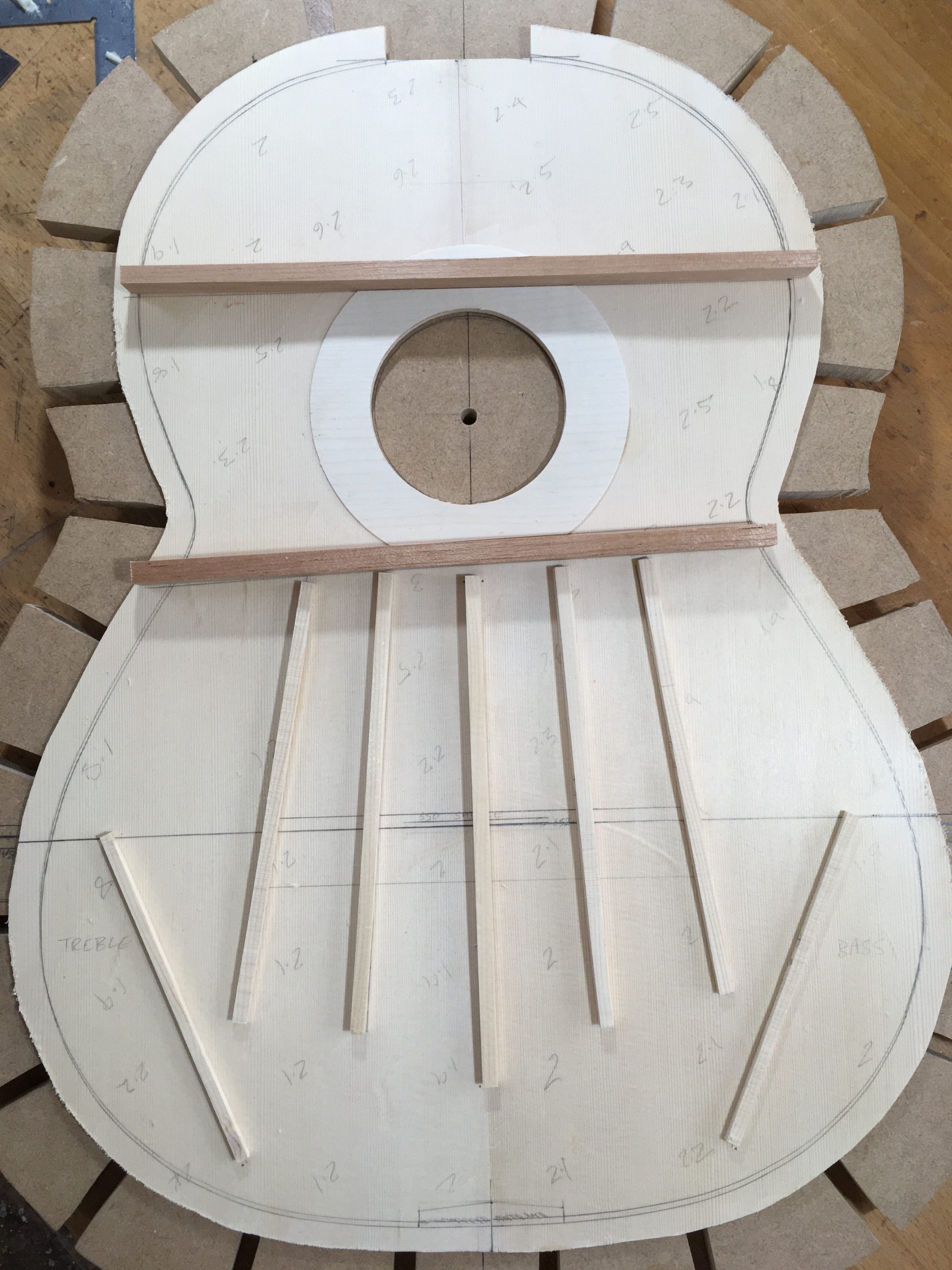
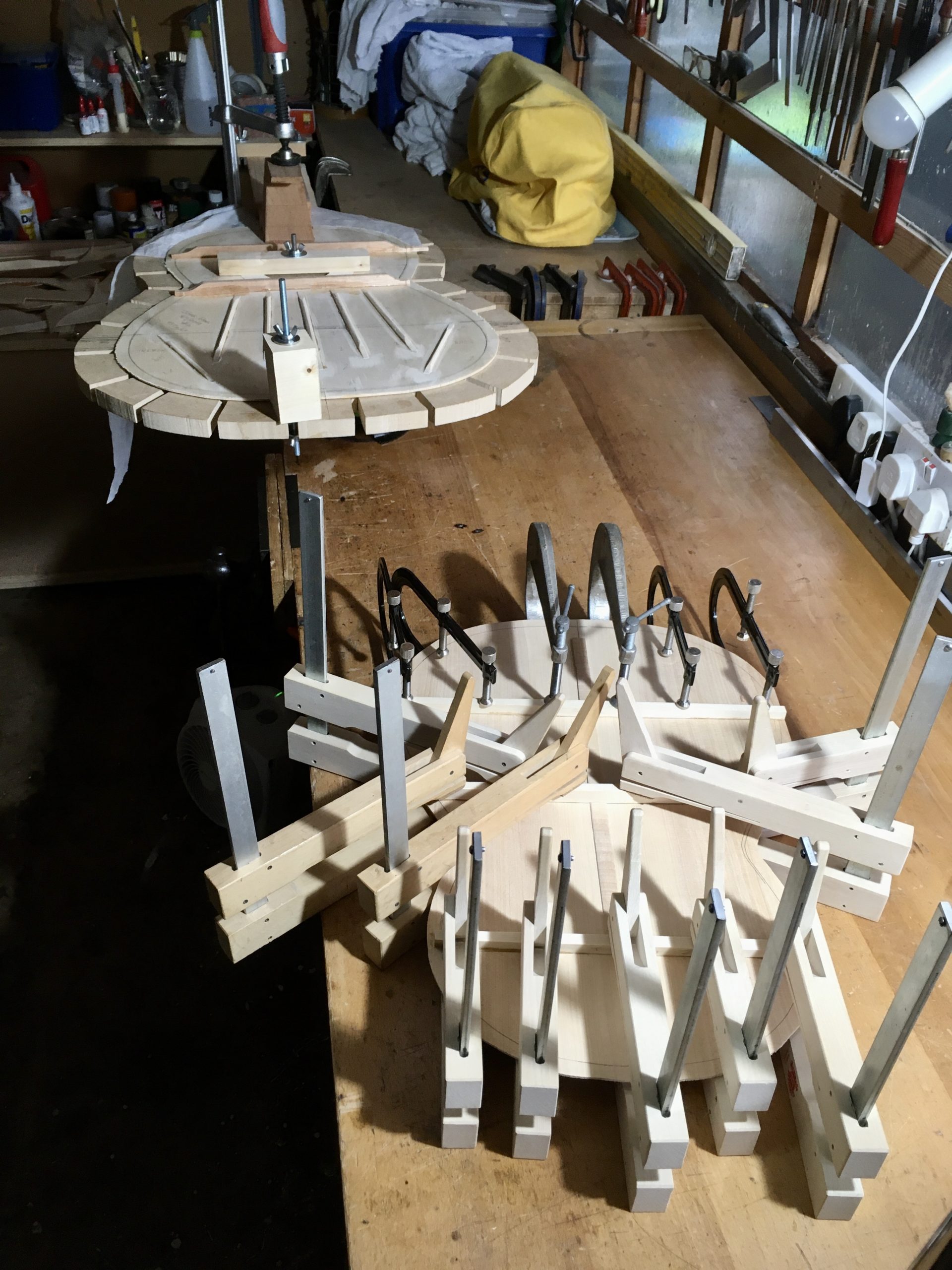
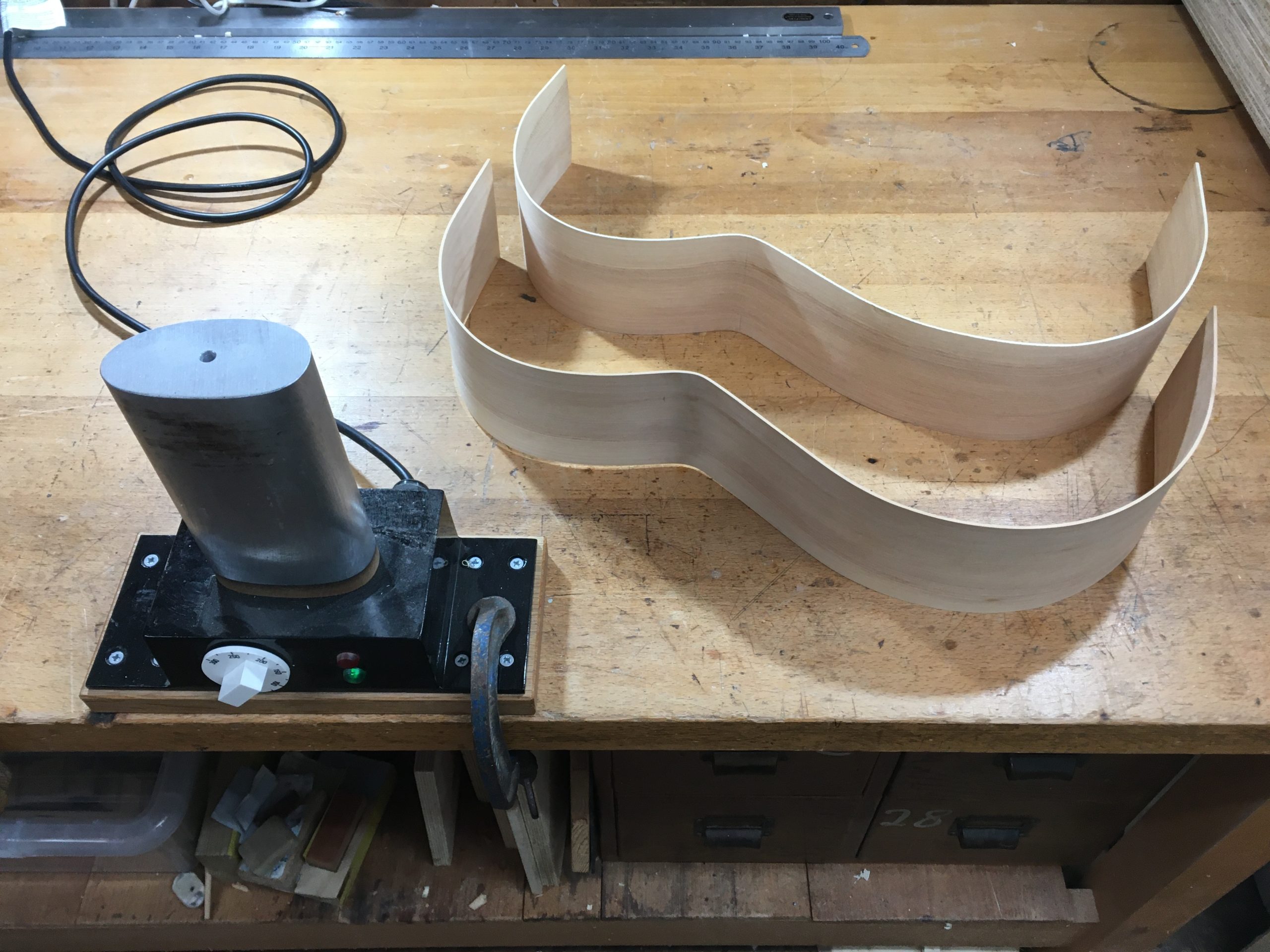


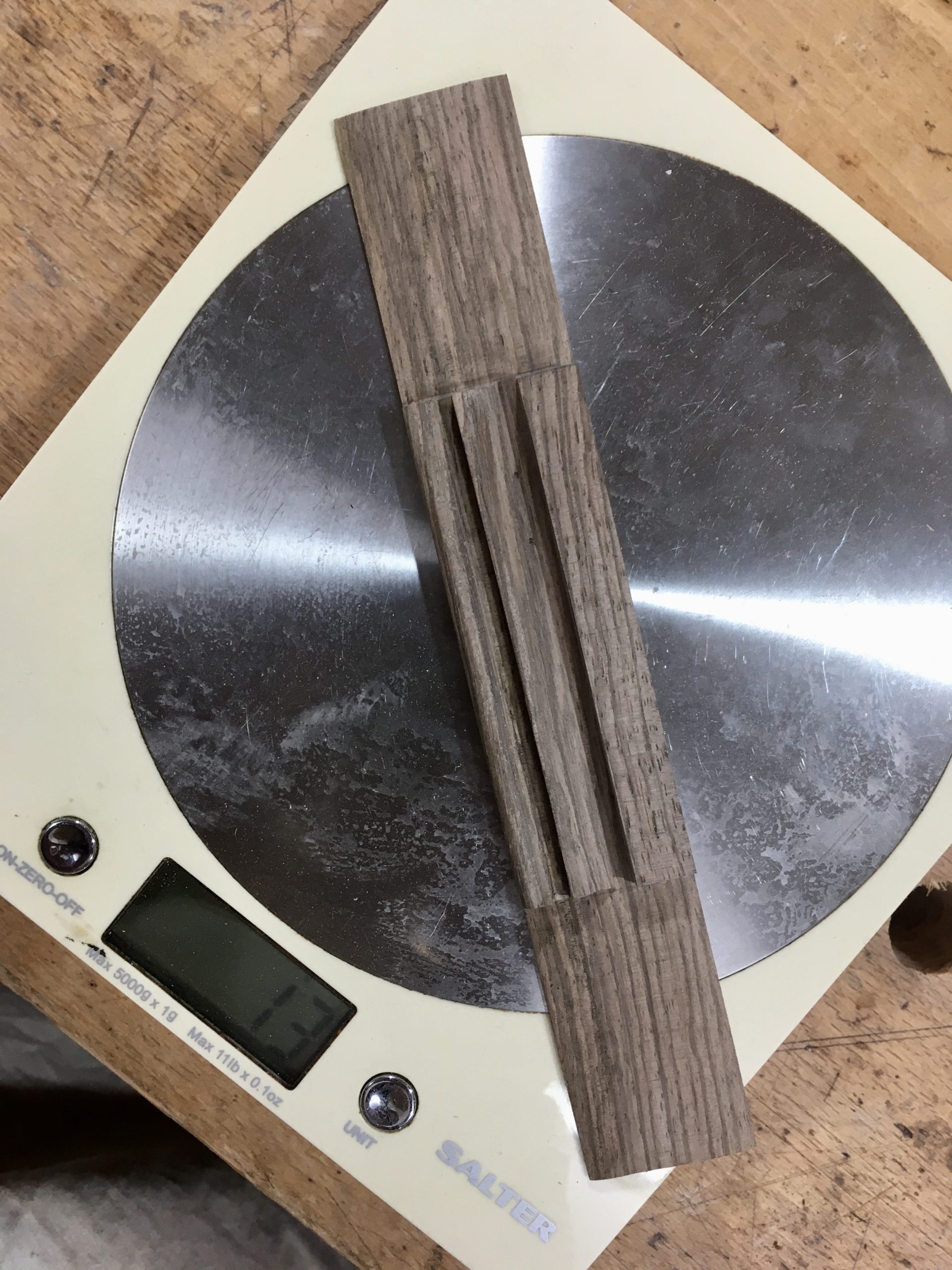

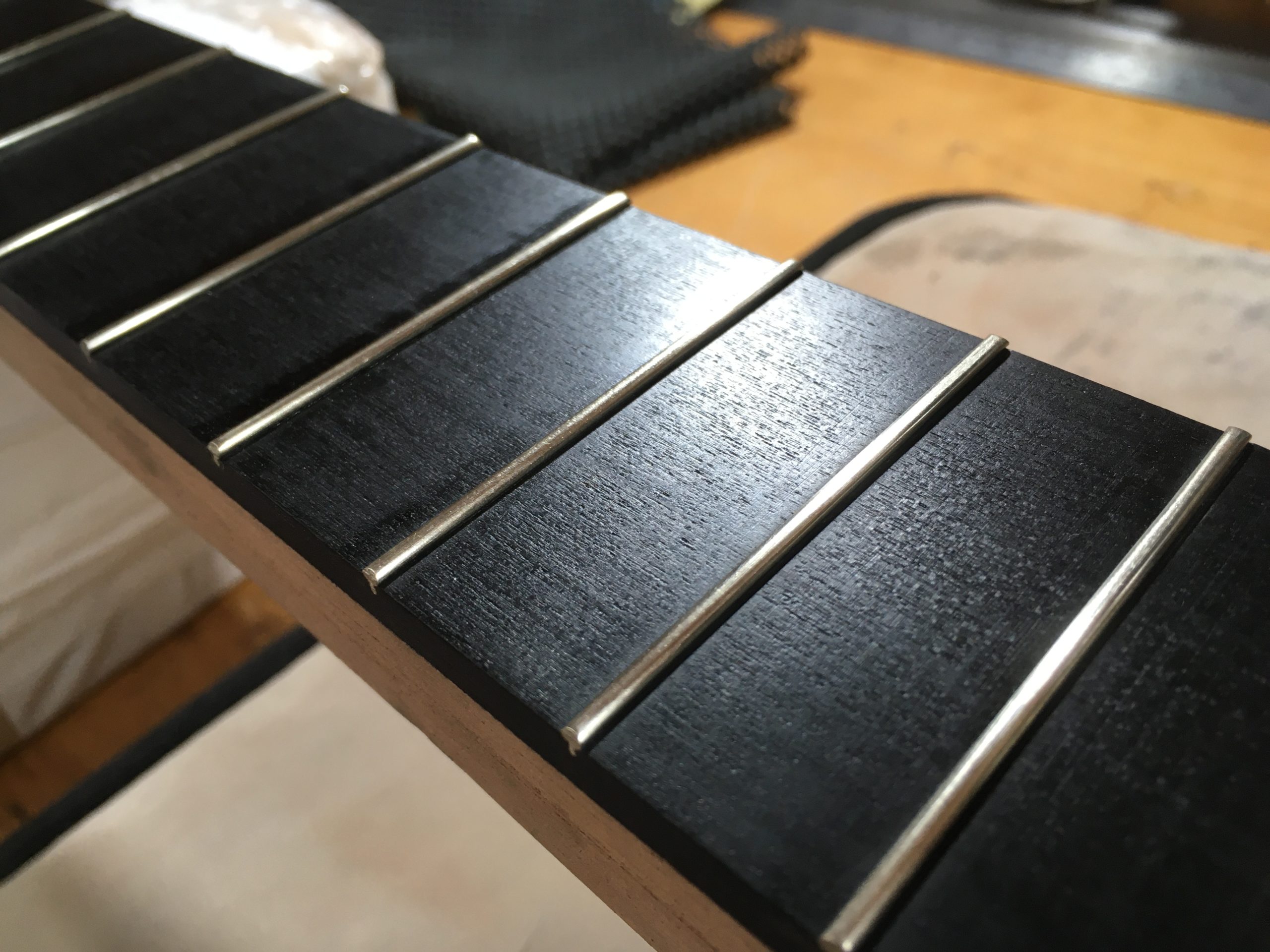

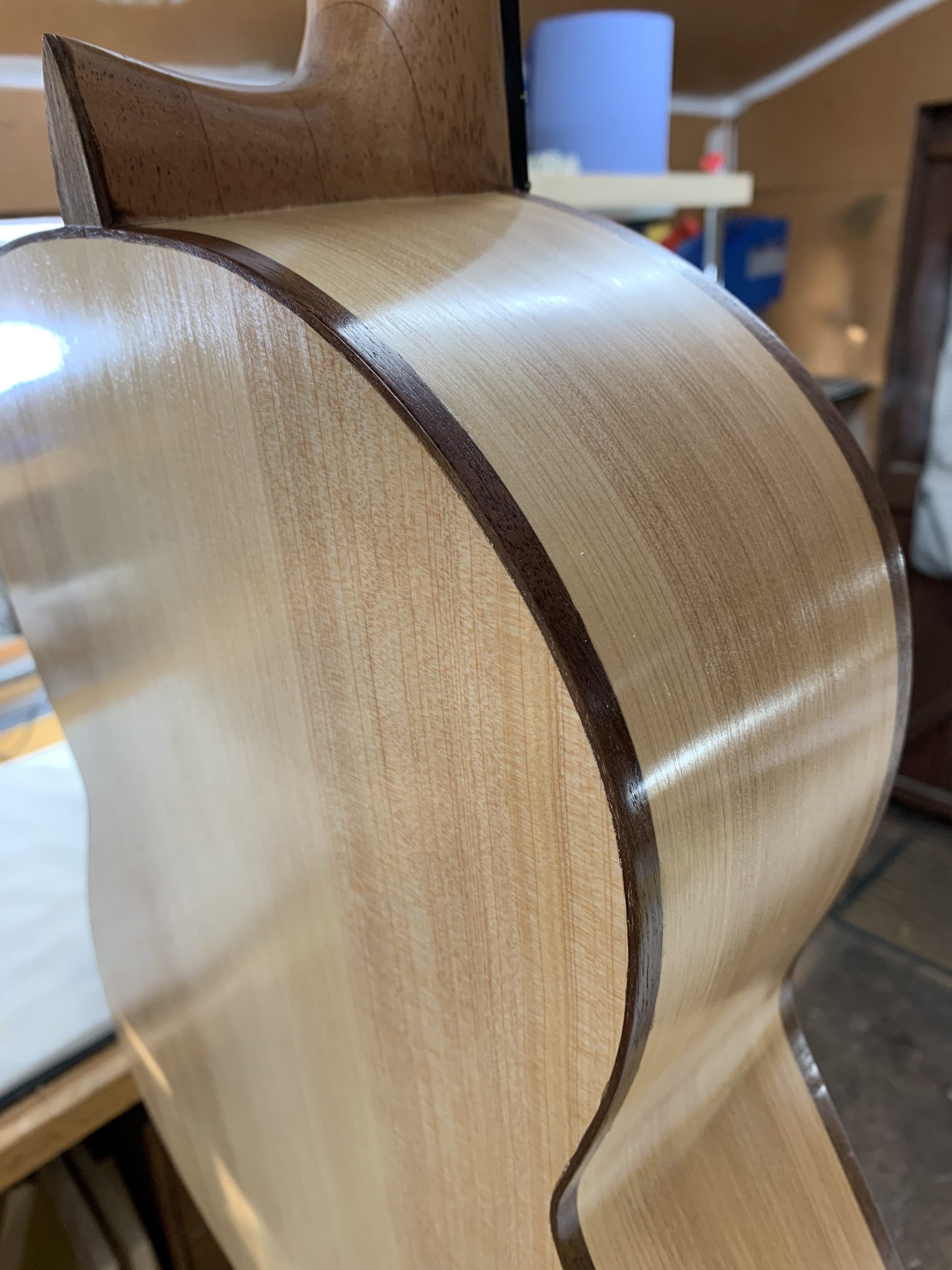
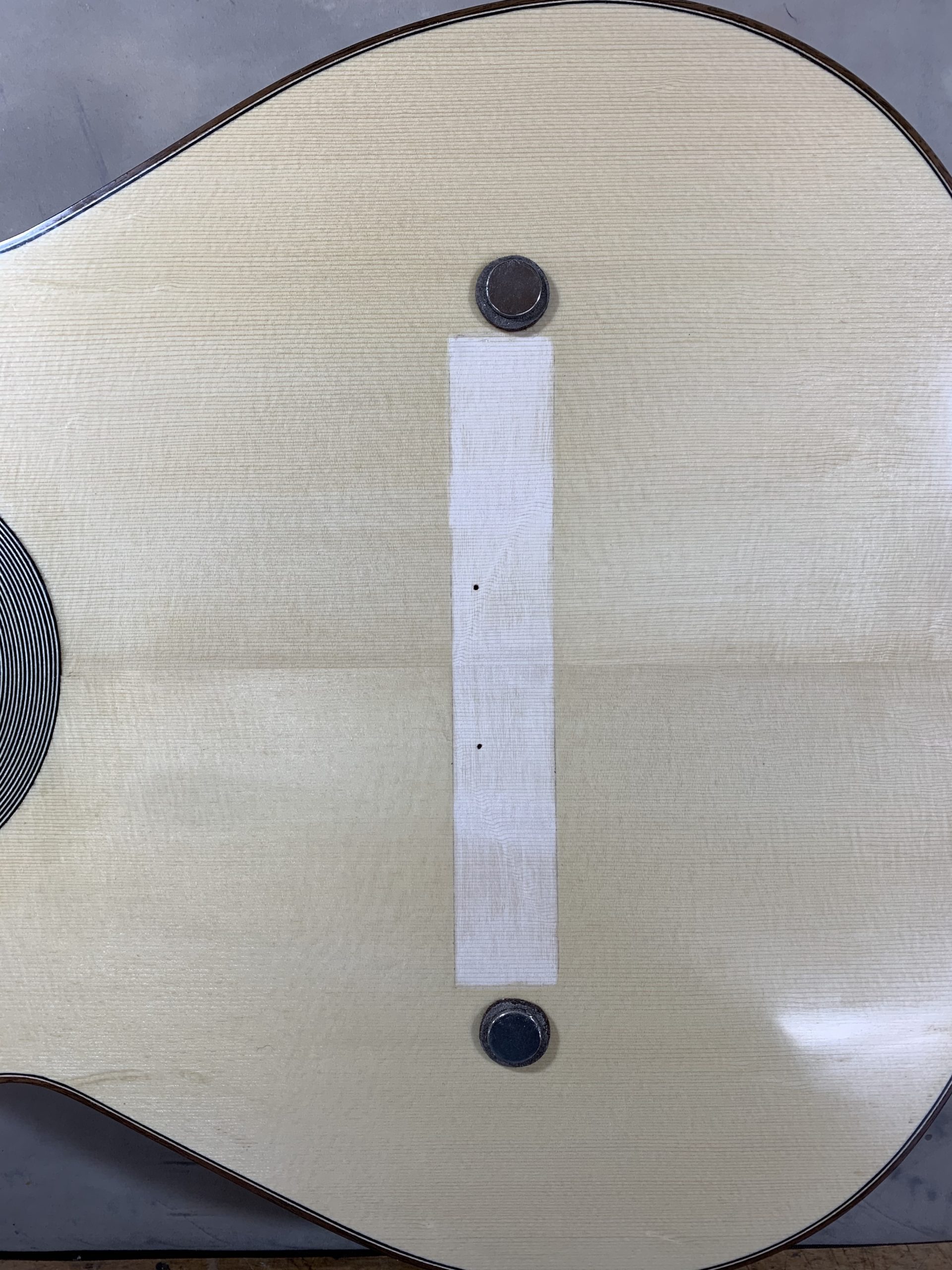
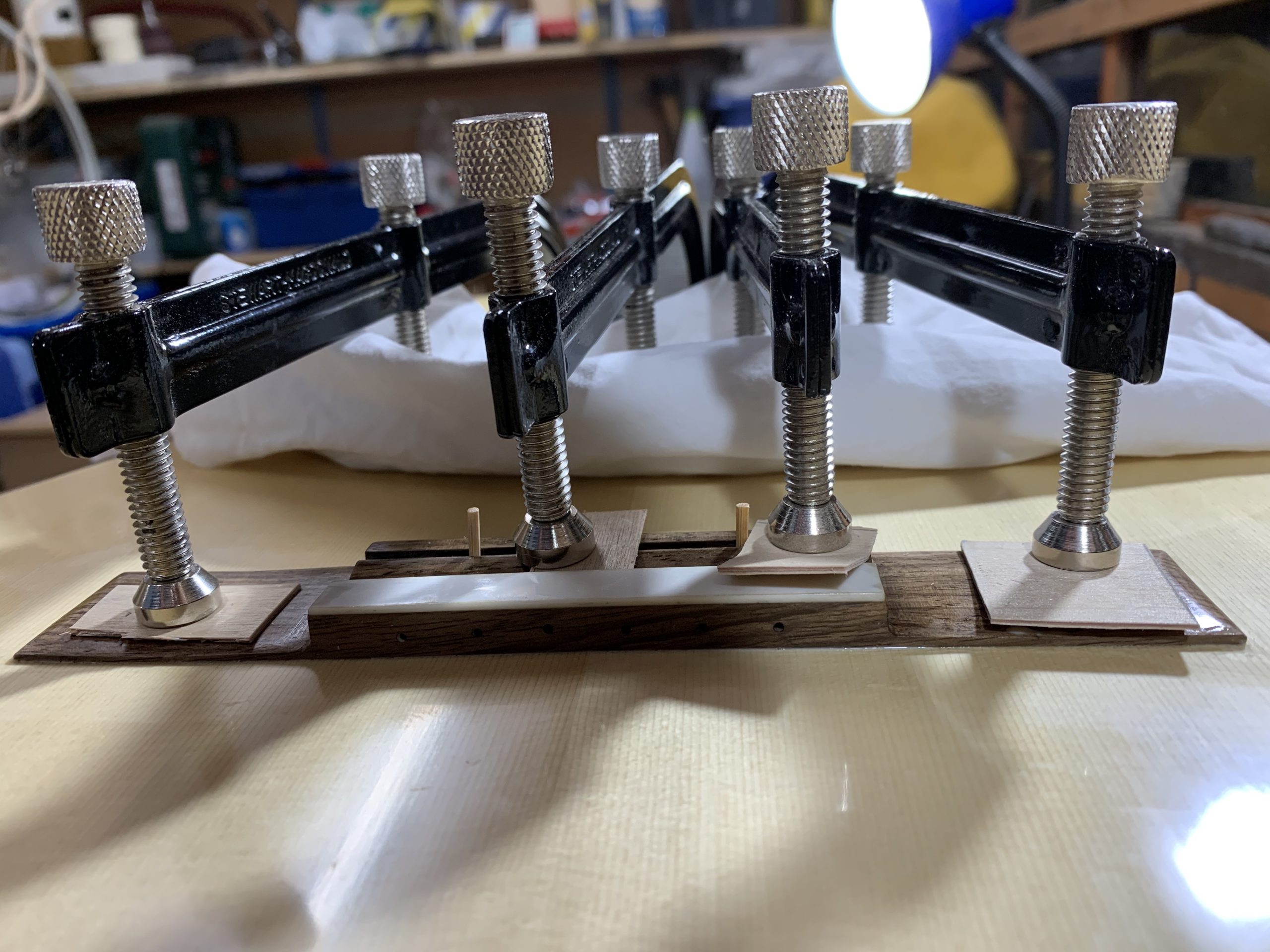
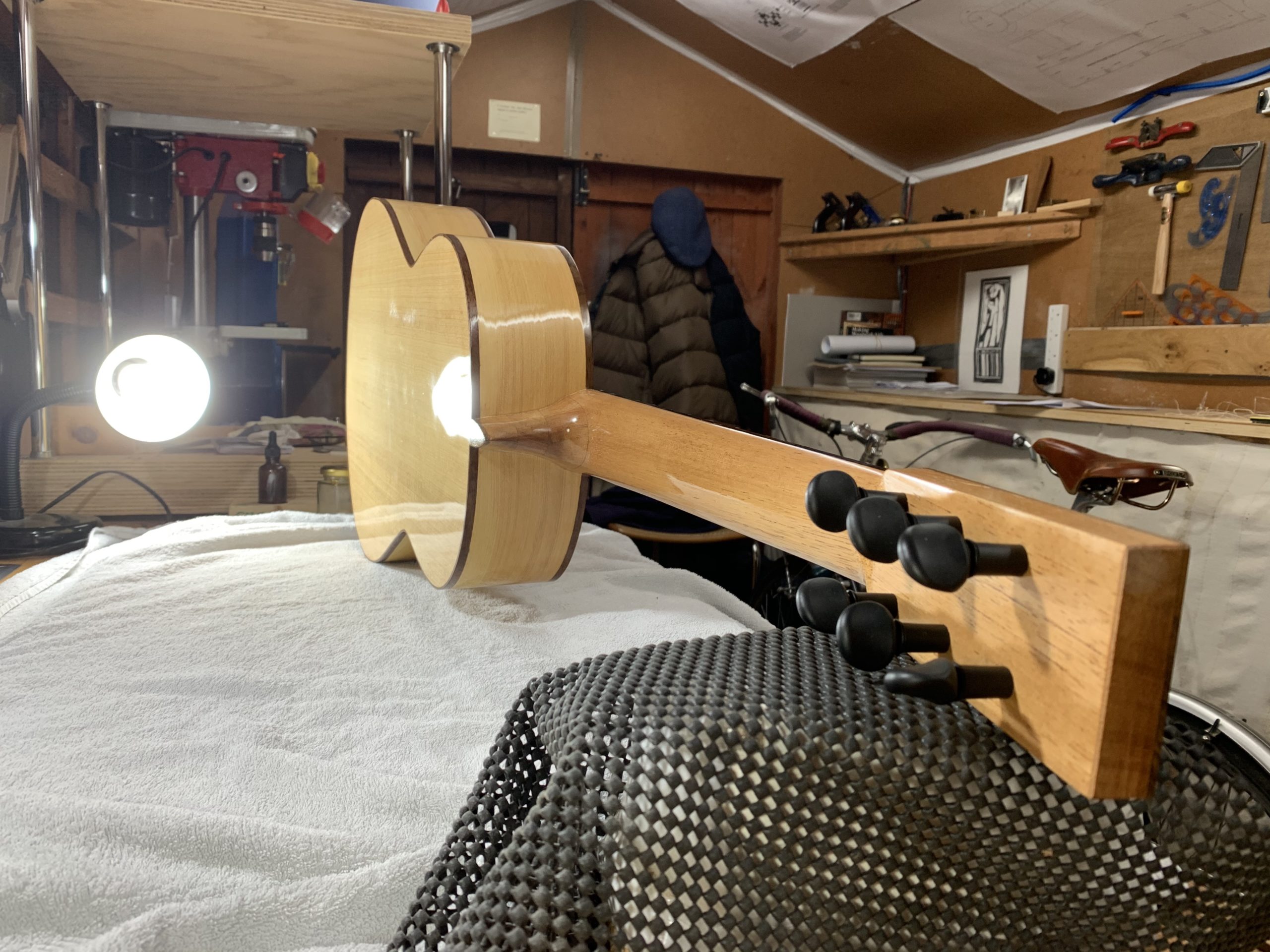
Well done! It looks good.
Joss, This was a joy to read and to look at. To begin with, I have always loved wood and working with fine woods. What you have done is a feast for the eyes.
From a more analytical perspective, I find your narrative enormously valuable because it addresses Donald Schön’s lament that professionals know more than they can say. You are finding words to convey the learning process and to lay down tracks for others. Don always visualized this kind of work as a master-apprentice relationship (so too do Dreyfus and Dreyfus). But, in a way, you are both the master and apprentice here with the library of world knowledge about these processes combined with the experiential narrative of doing it and finding where the tensions between the goal, processes, and necessary practice are located. I read this with real delight and cannot think of a similar text anywhere. Are there any? Onward! Davydd
Thank you for your comment, Davydd. It means a lot to me that you think there is analytical value in the write-up. Since I first learned how to make a guitar, I have been conscious of documenting and reflecting on the process of what and how I am learning. My notes here on this blog and elsewhere are part of that, and I am also keeping a workshop notebook that occasionally drifts into reflection. At some point in the future, I will probably formalise it into a journal paper or book chapter.
It is hard to convey the learning process for the reason you and Schön outline. This is partly due to the difficulty of finding the right words, but also because creating that narrative competes with time and cognitive attention to the process of making itself. Sometimes I think to myself, I must write an observation down, but then I resent how the (meta-) analytical process distracts me from the work at hand. Of course, there is always an analytical element to craft work that habitually gets ploughed back into the making, but then removing oneself from the bench and writing it up requires further analytical effort. You will know what this feels like from your fieldwork, I’m sure.
Are there similar texts where this happens? Yes, I have found some. There must be more:
David Sudnow (1978) ‘Ways of the Hand. The organisation of improvised conduct.’ The author painstakingly analyses his experience of learning to play Jazz piano.
Douglas Harper (1987) ‘Working Knowledge. Skill and Community in a Small Shop.’ The author writes about his experience working alongside a local mechanic/engineer.
Isaac Wade Calvert (2014) ‘Investigating the One-on-One Master-Apprentice Relationship: A Case Study in Traditional Craft Apprenticeship.’ A PhD thesis about learning violin and cello making. https://pdfs.semanticscholar.org/4ba4/bf508d75e8255ff9f3dad0c643e4e26b67f9.pdf
Although all three authors are learning from others, in some respects their writing is very self-reflective and a reminder that much of what we learn, we learn alone in the doing, rehearsing, practicing and repetition.
If anyone else reading this comment knows of similar texts, please reply with a comment.
Thank you.
Joss, I wonder if there might be modes of documenting that interrupt your process less. Perhaps a voice-activated app to record comments while you work. These could be converted to text with various apps. I suppose that one reason for the lack of documentation is the intensely hierarchical relationship between masters and apprentices that perhaps silences the apprentice’s contribution.
Thanks for the references. Years back, when I looked into this, I found only Sennet (did not like it) and Dreyfus and Dreyfus. I will try to follow up on some of these materials.
As to writing it up, I think there is much more here than a chapter or an article. There is a gem of a book lying in wait here.
Happy New Year.
Davydd
Hi friend 🙂
I really like the looks of your guitar.
I wonder how it sounds, and do you sell your guitars?
Thank you for your comment, Shlomi. I hope to have a recording by the end of February and am arranging it with a friend. I am not yet selling my guitars commercially but am making them for people I know. I want to gain more experience before I start selling them widely. Thank you for asking. I have created a map of luthiers in the UK who could make you a flamenco/classical guitar. Maybe you could ask one of them?